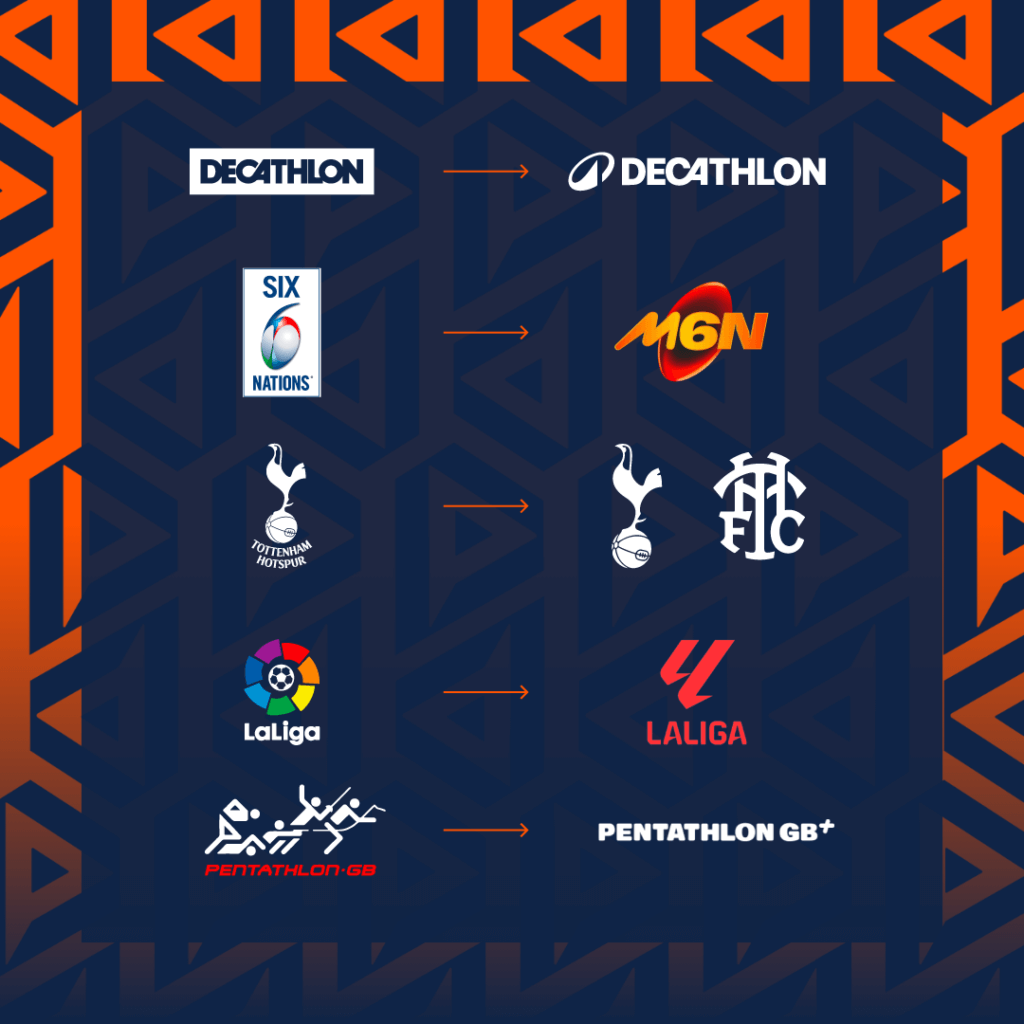THERE’S NO SUCH THING AS A CAPTIVE AUDIENCE – WELCOME TO THE ATTENTION ECONOMY.
In today’s world, consumers of sport have infinite choice and unlimited digital currency to spent it seems. The sporting sphere rotates around multiple media channels, mediums to engage and virtual stadia to interact, pre, during and post event, making the challenge for digital marketers to create an impact even greater.
Take a Look at What Happens in Just a Day on Social Media:
– 1.2M people join social media platforms [1]
– 6.6B Internet searches [2]
– 25M hours of Netflix streaming [3]
– 269B Emails sent [4]
As a collective, we are creating and consuming an enormous amount of content, from the moment we wake up to the moment we go to bed. With more and more people gaining access to the Internet and new devices emerging, the amount of content we create and consume will accelerate further.
Therefore, we’re relying on our mobile devices more than ever, to navigate the sea of information and content that we’re exposed to every day. And It’s no wonder. Mobile is the dominant device in our lives.
According to Apple’s global iPhone data, we’re unlocking our mobile devices more than 80 times a day [5}. Mobile has become a personal remote to our favourite information, with users consuming content 41% faster in comparison to desktop.
A report by Stringberry concludes, that the average smartphone user scrolls 300ft of thumb miles per day [6]. That’s the equivalent of BIG BEN!
Research clearly shows the ever-growing demand for mobile, and Indicates the shifting digital landscape. With rumours of major social media players hinting at the Idea of ‘Mobilizing’ their platforms, mobile must now become central to a marketers digital strategy.
Relevant Targeting and Creative Is Essential
Think of targeting on social like salt. A little bit goes a long way, but too much can be a bad thing.
Mobile has fundamentally transformed the way that people pay attention. People are making split-second decisions about whether or not to pay attention. 80% of mobile users expect tailored ads that target not only location, but Interests and habits as well. They expect their ads to know who they are and how they self-identify as mobile purchasers. 46% would like to save ads and access them later, and 39% would like their ads to be customised based on the product they want. [7]
Due to the nature of social media platforms and the algorithm’s that construct their DNA. Targeting’s impact on a campaigns reach is Incredibly significant, and marketers often consider how much more effective you’re asking your creative to be as merely an afterthought.
As much as brands do have a target audience, consumers don’t like fitting into a norm, rule or target category. There are often untapped potential users outside those groups or categories who are also buyers and interested in your brand.
So the question you should ask yourself as a marketer in regards to targeting is – What Is the minimum amount of targeting you can implement, to yield the maximum amount of Impact?
Creative In a Mobile World
When it comes to mobile, we’re turning to video
– 78% of total data traffic will be video by 2021
– 3X more people were engaged with an ad when a brand name and message were presented in the first 10 seconds of a video ad
– 79% of consumers would rather watch a video to learn about a product, then read text on a page [8]
Consumption of Video Is Frequent and Fast
Capture attention – Start with your most captivating elements. Incorporate your brand identity early and choose attention-grabbing video thumbnails.
Length + Message – Create short-form video. Aim for less than 15 seconds and present your main message upfront, (within the first 3 seconds). Videos that are 15 seconds or shorter match users’ attention spans and are better able to communicate messaging, leading to improved performance outcomes.
Delight with Sound on – Use sound to delight instead of inform. Try using visual storytelling and/or on-screen text to get your message across as over 80% of ads will be consumed on mute.
Use Vertical Video To Drive Performance
People of all ages are watching more video on mobile. Vertical viewing, in particular, has sparked in popularity. According to a YuME report, it’s providing a more intuitive experience for people [9].
Why Vertical?
Vertical video formats take up more space on a mobile screen, giving you more attention and real estate for your message. 7/10 tests showed that vertical video ads drive an incremental increase in brand lift, including a 3-to-9 increase in ad recall [10]. In fact, 79% of novice vertical video consumers agreed that the format is more engaging, and said that they would choose the vertical format in most cases [11].
Capture Attention Alongside the Spectrum

Building campaigns around the attention spectrum addressing the three types of Facebook Mobile users is essential:
1. On the go
2. Lean Forward
3. Lean Back
It’s important to know that these are rough guidelines and the formats themselves can be used in a flexible way. For instance, Canvas is a full-screen experience that is great for “Lean Forward” behaviour that invites people to interact, but you can also include a longer-form video and tap into “Lean Back” behaviour.
References:
1) https://blog.microfocus.com/how-much-data-is-created-on-the-internet-each-day/
2) http://www.statisticbrain.com/google-searches
3) Variety, “Netflix’s Latest Streaming Record: Members Viewed 250 Million Hours of Video on a Single Day in January”, March 2017,
4) https://www.lifewire.com/how-many-emails-are-sent-every-day-1171210
5) Apple, The Apple Worldwide Developers Conference (WWDC), 2016
6) https://stringberry.com/pages/thumb-miles
7) Verve, “The Rise of Mobile Prodigies: Millennials, Gen Z and the Future of Mobile Marketing”, March 2017
8) Source: 1) Cisco Visual Networking Index: Global Mobile Data Traffic Forecast Update, 2016-2021 White Paper, 28 March 2017, 2 Facebook IQ source: Video ad rating conducted internally by Facebook in Q4 2015: 2,183 video ad ratings corresponding to 965 video ads in market in the US and EMEA between Q4 2014 and Q4 2015. Video ad metadata obtained from Facebook internal data. Brand performance data based on Nielsen Brand Effect norms database.)3) “The State of Video Marketing 2017”, Wyzowl, 2017
9) Vertical Video is on the Up and Up”, YuME
10) Facebook data, North America, Latin America and Europe, Nov-Dec 2016
Vertical Video Turns Heads on Social Platforms, Mobile Devices”, DigitalNewsDaily, June 2017.


